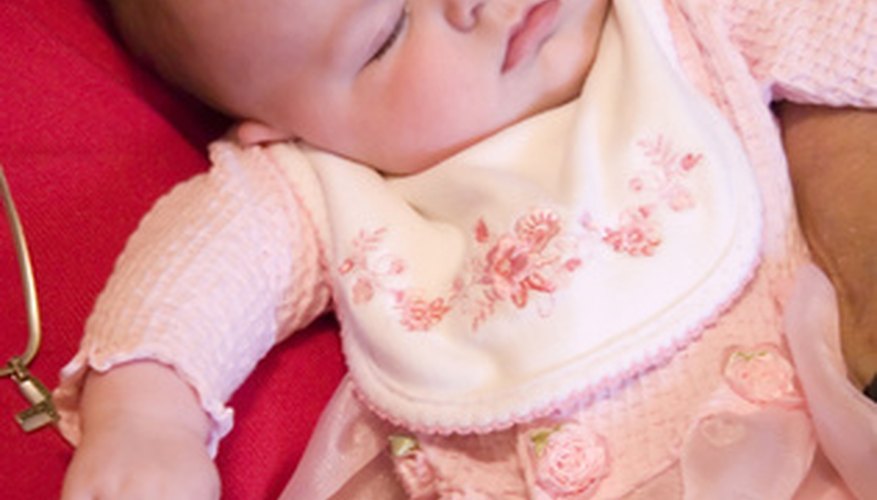"Turned in eyelid" is another term for entropion, a medical condition characterised by an eyelid that folds in toward the eye. An eye with entropion becomes irritated when the lid skin and lashes rub against the cornea, or eye surface. Most people diagnosed with entropion are older, although it's possible, but rare, for a baby to be affected by the condition.
Symptoms
Symptoms of entropion are the same in babies as they are in adults and include eye irritation, which may cause constant rubbing, excessively watery eyes, never-ending redness in the whites of the eye, and oversensitivity to wind and light. More severe symptoms consist of a mucous discharge that crusts along the lid and distorted or diminished vision. Adults report the feeling that there's always something in their eye that can't be removed.
In Babies
Entropion most typically affects the lower eyelid, and doesn't necessarily affect both eyes. Women develop the condition more than men do, and the majority of people who have the condition are older. That said, anyone of any age can be affected by entropion. In extremely rare circumstances, "entropion is present at birth... More often, a baby with turned-in eyelashes at birth has an extra fold of skin on the eyelid, called epiblepharon," according to the Mayo Clinic.
- Entropion most typically affects the lower eyelid, and doesn't necessarily affect both eyes.
- In extremely rare circumstances, "entropion is present at birth... More often, a baby with turned-in eyelashes at birth has an extra fold of skin on the eyelid, called epiblepharon," according to the Mayo Clinic.
Causes
Most causes of entropion affect older people and include muscle weakness related to ageing, scarring, prior surgery, and an unfavourable reaction to drugs---especially drugs used to treat glaucoma. Entropion can also be caused by infections, such as herpes of the eye, and trachoma, which is rare in the United States but still exists in parts of Asia and Africa. Infants may develop entropion due to infection or even muscle weakness, but it's more likely to be a result of congenital epiblepharon or congenital entropion. Either one of these congenital conditions are likely to result in incorrect development of the lower eyelid's retractors.
- Most causes of entropion affect older people and include muscle weakness related to ageing, scarring, prior surgery, and an unfavourable reaction to drugs---especially drugs used to treat glaucoma.
- Entropion can also be caused by infections, such as herpes of the eye, and trachoma, which is rare in the United States but still exists in parts of Asia and Africa.
Complications
Complications due to entropion begin with constant cornea irritation, which can lead to corneal damage. In addition, having eyelid skin and lashes constantly rubbing against the eye's surface can break it down, causing eye ulcers that can cause blindness.
Treatment
"Entropion seen in babies usually resolves spontaneously within a few months, but occasionally needs to be treated," according to Minnesota Ophthalmic Plastic Surgery Specialists (MOPSS). Lubricating eye drops can help protect a baby's cornea in the meantime. Further treatment depends on whether the eye surface is being damaged by the lid skin or lashes. If medical professionals determine that the cornea is sustaining damage, the routine treatment is surgery on the turned-in lid.
- "Entropion seen in babies usually resolves spontaneously within a few months, but occasionally needs to be treated," according to Minnesota Ophthalmic Plastic Surgery Specialists (MOPSS).
- If medical professionals determine that the cornea is sustaining damage, the routine treatment is surgery on the turned-in lid.
